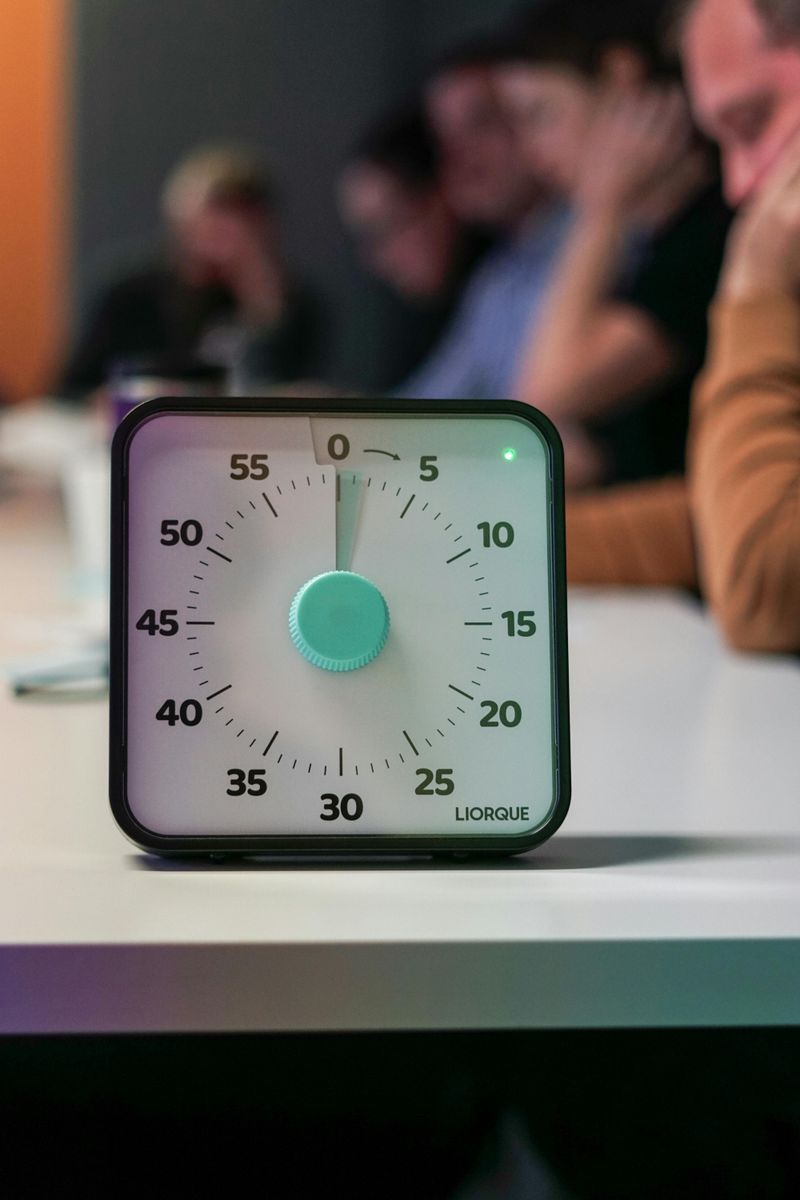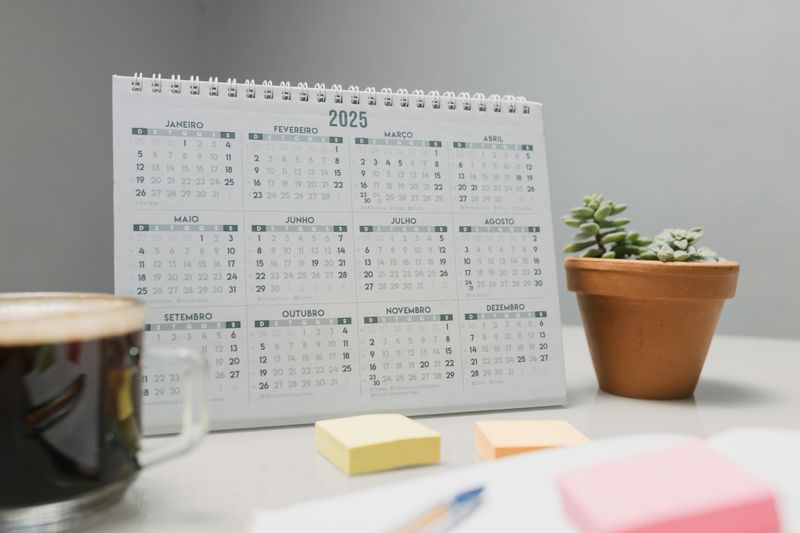11 Expert-Approved Productivity Hacks That Sound Bizarre but Actually Work

Ever feel stuck in a productivity rut despite trying every traditional method? Sometimes the weirdest approaches unlock our best work. These unconventional tactics might raise eyebrows, but productivity experts swear by their effectiveness. Each bizarre hack taps into different aspects of psychology to help you overcome procrastination and boost your output in surprising ways.
1. Trick Your Brain With Tiny Steps

When facing a mountain of work, your brain’s resistance can feel overwhelming. Breaking tasks into ridiculously small steps – like “open the document” or “write one sentence” – bypasses this mental barrier completely.
These micro-actions require so little effort that your brain can’t justify avoiding them. Once you’ve started, momentum naturally builds as your brain shifts from resistance to engagement.
Many productivity experts call this “reducing the activation energy” needed to begin. The beauty lies in its simplicity – by making the first step absurdly easy, you overcome the hardest part of any task: just getting started.
2. Blast Your “Hype Playlist”

Music triggers powerful emotional responses in our brains. Creating a dedicated playlist of songs that make you feel unstoppable can transform your mental state before tackling challenging work.
The key is selecting tracks that spark genuine excitement – your personal soundtrack for success. Play these energizing songs for just 2-3 minutes before starting difficult tasks.
The music activates your brain’s reward pathways, flooding your system with dopamine and creating positive associations with work. Athletes use this technique before competitions, and the same psychological boost works perfectly for mental challenges too.
3. Count Down Like You’re About To Dance

Our brains excel at creating excuses when facing unpleasant tasks. The simple act of counting backward from five creates an automatic launch sequence that bypasses your internal negotiation committee.
Mel Robbins, who popularized this technique, explains that the countdown interrupts overthinking patterns. When you reach “one,” physical movement must immediately follow – no exceptions.
This hack works because it creates decisive action before resistance builds. The countdown serves as a clear transition signal between thinking and doing, making it especially effective for morning routines, exercise, and tackling dreaded tasks that you’ve been avoiding.
4. Ditch The To-Do List For A Calendar

Endless to-do lists create the illusion of productivity while actually overwhelming us. Transferring tasks directly to calendar blocks forces honesty about how much time things actually require.
Time-blocking on a calendar reveals the brutal truth: there are only so many hours in a day. This visual reality check prevents overcommitment and creates realistic expectations about what you can accomplish.
Cal Newport, author of Deep Work, advocates this method because it transforms abstract intentions into concrete plans. The shift from “what to do” to “when exactly I’ll do it” dramatically increases follow-through and eliminates the false productivity of maintaining never-ending lists.
5. Use Music Like A Task Timer

Our brains struggle with abstract time concepts but respond beautifully to clear beginnings and endings. Assigning specific songs or albums to different tasks creates natural work intervals with built-in urgency.
The approach is simple yet effective: choose music that matches your task’s energy requirements. When the last note plays, you know it’s time to wrap up or move on, eliminating decision fatigue about when to transition.
This method harnesses what psychologists call “temporal landmarks” – clear markers that help organize our perception of time. The defined endpoint creates gentle pressure to maintain focus, while the music itself blocks distracting environmental sounds.
6. Rate Tasks By “Intensity,” Not Importance

Traditional productivity systems often fail because they ignore our fluctuating mental energy. Instead of prioritizing by deadline or importance alone, try categorizing tasks by the mental or emotional effort they require.
High-intensity tasks demand creative thinking and difficult decisions. Medium-intensity work involves focused but straightforward execution. Low-intensity activities require minimal mental strain.
Match these categories to your energy levels throughout the day. Tackle complex problems during your peak hours. Save administrative tasks for energy dips. This approach recognizes that willpower is a limited resource, making your workload feel more manageable by aligning tasks with your natural energy rhythms.
7. Move First, Think Later

Physical movement creates an instant energy shift that can break through mental blocks. Before tackling challenging work, try 60 seconds of jumping jacks, stretching, or even dancing wildly to activate your nervous system.
The science is clear – even brief movement increases blood flow to the brain and releases BDNF, a protein that supports cognitive function. This physical reset signals to your brain that it’s time to transition into work mode.
Stanford research shows walking boosts creative thinking by up to 60%. The movement doesn’t need to be intense – simply changing your physical state interrupts procrastination loops and creates a clean slate for focused work. Your body leads, and your mind follows.
8. Narrate Your Day Like A Sports Commentator

Talking to yourself isn’t crazy – it’s a psychological technique called “self-directed speech” that dramatically increases focus and commitment. Try narrating your work process aloud with the enthusiasm of a sports announcer.
“She’s opening the spreadsheet… concentrating hard… and BOOM! Formula complete!” This playful approach transforms mundane tasks into engaging challenges while creating accountability through verbalization.
Research shows external verbalization strengthens working memory and helps maintain focus on goals. The slight absurdity makes boring tasks more enjoyable, while the running commentary helps catch mistakes and celebrate small wins throughout your day. Plus, it’s impossible to check social media while actively narrating your productivity streak!
9. Celebrate Every Micro-Win

Our brains are wired to respond to rewards, yet we typically only celebrate major accomplishments. Deliberately acknowledging tiny victories – sending an email, completing a paragraph, making a call – creates powerful momentum.
Small celebrations trigger dopamine release, reinforcing the neural pathways associated with task completion. Your celebration can be as simple as a fist pump, a happy dance, or saying “nailed it!” out loud.
BJ Fogg, behavior scientist at Stanford, calls this “celebration conditioning” – training your brain to associate positive emotions with productivity. Over time, this creates a natural pull toward starting tasks rather than avoiding them, as your brain begins craving those micro-moments of triumph throughout the day.
10. Work In “Costume Mode”

The clothes we wear dramatically affect our mindset and behavior – a phenomenon psychologists call “enclothed cognition.” Creating a specific outfit reserved exclusively for focused work sends powerful signals to your brain.
Your “work costume” might be as simple as a particular sweater or as quirky as a superhero cape. The key is consistency – this item should only appear when it’s time for serious productivity.
Olympic swimmer Michael Phelps famously wore the same warmup outfit before every race. The ritual created a psychological trigger that prepared his mind for peak performance. Your brain loves these clear contextual cues that eliminate decision fatigue and automatically activate your most productive mental state.
11. Write Tasks With Your Non-Dominant Hand

Forcing yourself to use your non-dominant hand creates productive awkwardness that jolts your brain out of autopilot. The deliberate struggle required to form each letter makes the task impossible to complete mindlessly.
This technique leverages neurological cross-patterning, activating both brain hemispheres simultaneously. The physical slowdown also prevents the common trap of writing overwhelming lists without thinking through each item carefully.
Leonardo da Vinci famously practiced this technique to boost creativity. The temporary difficulty creates heightened awareness of each word you write, making your task list more meaningful and memorable. This small act of mindfulness transforms a routine planning session into an exercise in presence and intention.

Comments
Loading…